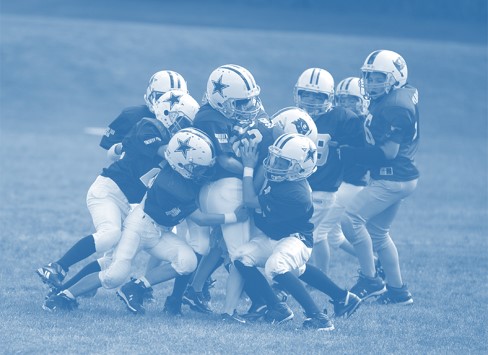Young Athlete Injuries: Treating Our Injured Teens Like Pros
Are we doing the right thing for our young athlete injuries? As a nation, over the past 1-2 decades, we’ve begun to treat our injured kid’s sports injuries like aging NFL athletes trying to eke out a contract extension for millions. However, the long-term calculus of trying to buy an aging athlete a few more big money years and the best long-term decision for a young athlete are quite different. Does the research show that we’re harming or helping our children with this aggressive orthopedic approach?
For example, we used to believe that ripping out a torn ACL and installing a new one was a miracle of modern medicine. However, the research of the last 5 years has raised more questions than answers about this approach. What are the long-term consequences of doing this? Does the research show that this will help or hurt a young athlete in the long-run? Let’s explore 3 common surgeries used in young athletes and what we know and don’t know about them.
1. ACL Replacement Surgery-The ACL is a major front-back stabilizer of the knee and is often injured in young athletes, especially in women’s soccer. When the ligament is torn partially or completely, it’s often replaced with an artificial ligament. However, research has shown that young athletes that get the ligament replaced are 6 times more likely to injure that ligament or the other side in a subsequent event. Why? The new ligament doesn’t have the nerve supply that’s so important for fine tuning knee movements. In addition, other studies have shown that jumping activities never return to normal after the surgery. Yet another research investigation showed that 2/3rds of athletes don’t return to their pre-injury level of sports a year out from ACL reconstruction surgery. How about the long-term consequences of doing nothing? One study showed that 60% of athletes that didn’t get the ACL replaced never needed the surgery. How about the long-term consequences of surgery? A recent study showed that 2 years after the surgery, cartilage was already beginning to break down in the knee. Another study showed that women were more likely to get arthritis after ACL surgery.
2. Meniscus Tears-The most common orthopedic surgery in the United States is a partial menisectomy-basically cutting out a piece of the torn meniscus. Meniscus tears are common in athletes as the meniscus acts as the cushion for the joint cartilage. As a result, you might think that this procedure is very effective. Not so much. A large study published in the New England Journal of Medicine showed that knee meniscus surgery patients didn’t do any better than those who got only physical therapy. After this study, many surgeons still held onto the concept that there was value in operating on meniscus tears in patients without arthritis (like our young athlete). However, a second New England Journal study was just published that showed that surgery for meniscus tears in patients without arthritis patients was no better than a fake surgery. So why not take out the torn piece of meniscus? Research has shown that this surgery can cause more arthritis, presumably by reducing the amount of natural cushioning for that cartilage.
3. Elbow Ligament Injuries-These days aspiring young pitchers are frequently turning to Tommy John surgery to fix tears of the UCL (ulnar collateral ligament). This strong ligament on the inside of the elbow helps to stabilize the joint and is often injured due to bad throwing mechanics. Tommy John surgery involves replacing that ligament. A recent study showed that even in major league baseball pitchers, with millions on the line, it takes almost two years to fully recover from the surgery and on average buys the pitcher another 4 years. Another study showed that complication rates for the surgery approached 20%. Finally, the level of evidence that supports the efficacy of medical procedures is graded 1-4, with level 1 evidence being the highest. This is particularly important to note in orthopedic procedures, where many have been found to work no better than placebo surgeries when rigorously studied. In the case of UCL surgery, no level 1 or 2 studies exist to show that the procedure is effective. In addition, no research looking at the long-term effects of the surgery in teen athletes has been published.
The conclusion? While some of these surgeries may be needed in young athletes, many are likely overly aggressive. Just remember, little Johnny isn’t vying for a contract extension worth millions, he’s just trying to stay active! Even if your kid may have the potential to be a pro-athlete one day, an aggressive operation now may ensure that this never happens.

If you have questions or comments about this blog post, please email us at [email protected]
NOTE: This blog post provides general information to help the reader better understand regenerative medicine, musculoskeletal health, and related subjects. All content provided in this blog, website, or any linked materials, including text, graphics, images, patient profiles, outcomes, and information, are not intended and should not be considered or used as a substitute for medical advice, diagnosis, or treatment. Please always consult with a professional and certified healthcare provider to discuss if a treatment is right for you.

